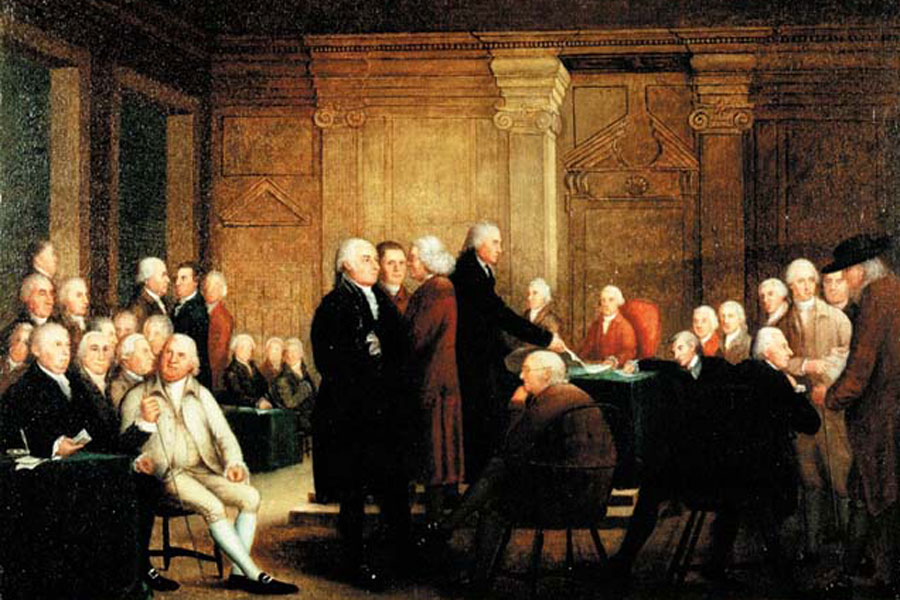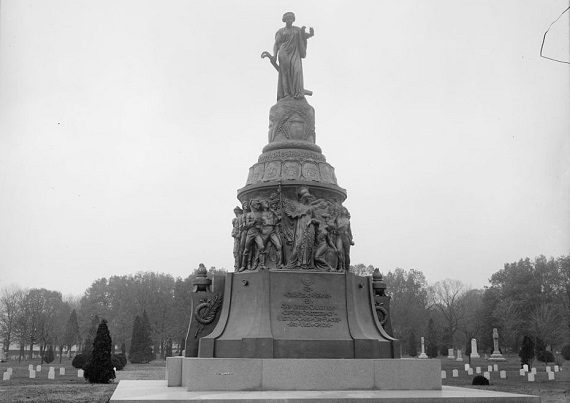Mainstream historians are both an incestuous and snarky bunch. They latch on to trends–fads really–and pull those trends like mules lugging a heavy cart to market (where they hope to sell books to their tens of fans). In time, the mules give out, but unlike the mule, these historians never realize they are whipped. They hire more mules like them and cut and snipe at the stallions who bravely defy the yoke.
Unfortunately, these trends become ingrained in the academy and become the catchy slogans and cliches of the “educated” elite. Our history then becomes distorted, often unrecognizable from a traditional viewpoint.
Every now and then a stallion is allowed to run free.
Professor Nathan Coleman’s new tome, The American Revolution, State Sovereignty, and the American Constitutional Settlement, 1765-1800, is the type of book the mules will hate. He refutes the now cliche nationalist narrative of American history and paints a different picture of the American founding, one that places the States at the center of American government.
The evidence is entirely on his side. From the beginning of the Imperial Crisis in 1765, American colonists viewed the struggle with Parliament as a constitutional crisis over the scope and power of the central government in London. For over one hundred years, the colonial legislatures were able to define taxing and monetary policy within their colonial borders. The central authority in London was charged with defending the colonies and regulating international trade. Such regulations were often overlooked, thus leaving the colonies as virtually self-governing societies with different cultures and customs. Benjamin Franklin recognized as much when he complained in 1754 that the prospect of forming a “congress” of all the colonies would be impossible because of colonial “provincialism.”
When the Parliament passed the Stamp Act in 1765, American reaction against the act was based on the traditional decentralization of the British empire. Several colonies in fact nullified the law. The Royal Governor of Massachusetts, Francis Bernard, knew that unless the colonial legislatures could be consolidated into one large mega-colony, the British would be facing continual resistance to acts of the central authority, particularly when the colonies were only “virtually” represented in London. Their intransigence and intractability were predictable considering they had been largely left alone during the era of “salutary neglect.”
Every step from 1765-1776 showed that the colonies viewed themselves as separate entities with only one common enemy: the Parliament in London. Certainly they acted in concert at times, but an American “nation” in the traditional sense of the word did not exist. John Adams called the delegates to the Continental Congress “ambassadors,” and each were mutually suspicious of the other delegations.
When Jefferson declared that the “states” were now “free and independent”–on equal footing with the “state of Great Britain”–in 1776, he was simply codifying what had already been established by custom and precedent in the previous one-hundred and fifty years.
Coleman expertly moves through the early federal period and explains in detail how a “constitutional settlement” was reached between the nationalists, most conspicuously Alexander Hamilton, and the republicans who favored the traditional role of the “local” over the “national.” This settlement did not abridge the sovereignty of the States; rather it strengthened American federalism by forcing the nationalists to recognize the importance of the State governments within the Union.
The Constitution, Coleman correctly contends, was a compact fact between States, not a “compact theory.” Suggesting it is merely a “theory” concedes too much to the other side.
Certainly, the settlement established at Philadelphia and in the ratifying conventions faced challenges, and Coleman nicely details how the nationalists attacked the Constitution as ratified in 1788. The First Judiciary Act of 1789, Hamiltonianism, the Chisholm v. Georgia (1793), and the Alien and Sedition Laws offered serious challenges to the compact. The Judiciary Act in particular, an often overlooked law that did tremendous damage to the “settlement,” is one area where Coleman offers a fresh perspective. Each of these obstacles were briefly overcome, but the fact that real federalism has been so largely ignored by historians and the public at large shows that the nationalist position won the day, not because it was correct, but because as Coleman concludes the nationalists bludgeoned the other side to death in the great war between 1860-1865. They rewrote the original meaning of the Constitution and created their narrative of American history, one that portrayed “state sovereignty” as nothing more than a quaint outlier, or more accurately a retardant, in the nationalist/progressive futuristic Utopia.
Forward, comrades!
Coleman has done a great service to the prestige of the academic community, though they will not see it as such. For once, an academic book has bucked the groupthink so pervasive in the ivory tower and has given us room to hope. Too bad none of the mules will read it and those that do will inevitably dismiss it as some “originalist” fantasy. That will say more about them than it does about Coleman’s skill as a historian or his attention to detail both of which are exemplary, as is his book.







